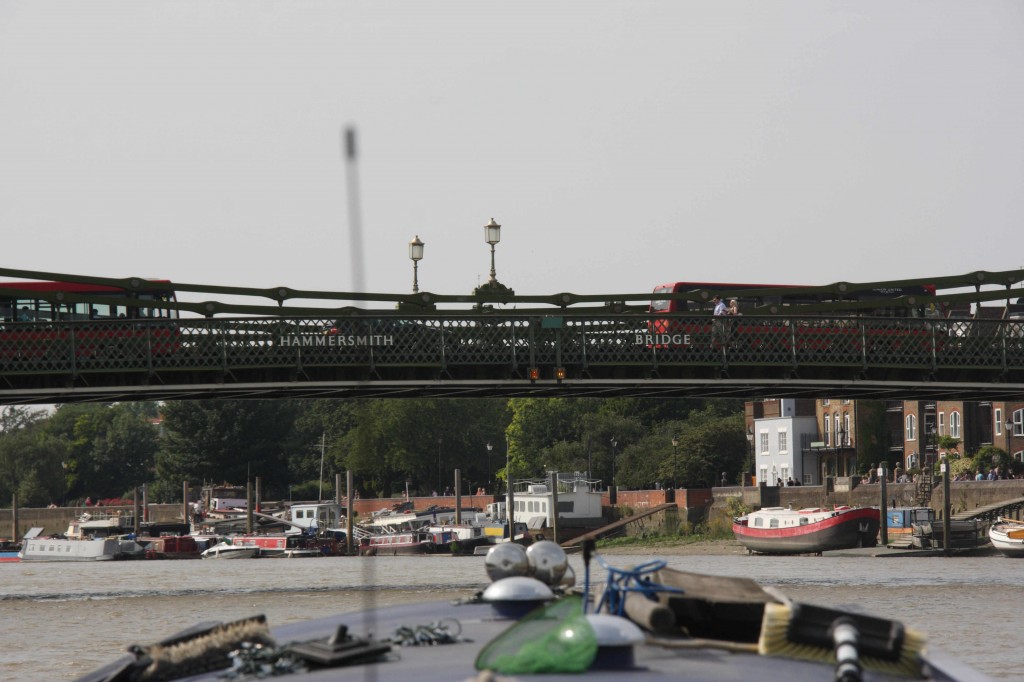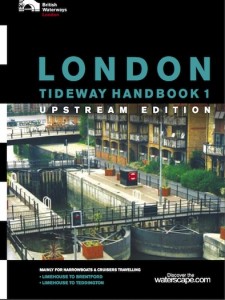Planning Your Cruise: Top Tips
Last updated: 08-08-2022 @ 09:08
- Make sure your boat is fit for the tideway
- Even if you are going out during normal Lock opening hours do give the Limehouse Lock Keepers a ring at least a day in advance and make a booking. Contact numbers are here. Ideally you want to leave Limehouse as soon as there is enough water to get over the cill, on a rising tide – say 3.5 hours before HW London Bridge. For various reasons Limehouse may offer you a slightly later slot ie HW-2. This is still feasible but your trip will take longer as you will get less benefit from the tide pushing you upstream.
- Make sure you have a copy of the relevant tideway handbook – see links below
- Check the tide times, links on this page
- Check the PLA Notices to Mariners – click here
- Make sure you boat is prepared – check lists are a page still in development but here it is
- Have your anchor ready to deploy – 15m of 10mm chain and 35m of 14mm rope please – it can be very deep out there
- Check the weather forecast, we don’t like going out if predicted winds are more than 15mph. Met Office, or Met Check
- Turn right when you leave the lock. If the first bridge you come to is a suspension bridge then you may have turned the wrong way out of the lock
- Make sure you understand the workings of Richmond ‘half tide’ lock. (link to Richmond Lock information).
- If appropriate please call London VTS to advise them that you have left the Tideway
- It is not necessary to book your transit at Teddington, but if you are arriving at a strange time you may want to phone them en route.
Planning your cruise: In Detail
Information Resources:
Make sure you have this book:
Click here for our list of other useful publications (page still under development) and this page for all cruising guides.
Timing:
Aim to leave Limehouse 3½ hours before high tide. For various reasons Limehouse may offer you a slightly later slot ie HW-2. This is still feasible but your trip will take longer as you will get less benefit from the tide pushing you upstream.
Teddington Lock can be used at any state of the tide
Richmond Half-tide Barrier is raised 2 hours before and after local high tide. If the barrier is down then you will need to use the lock at Richmond to continue upstream.
Limehouse Lock needs enough water over the cill before you can leave – you can generally enter the lock in the period 2 hours before and 2 hours after low tide (London Bridge)
Booking Locks:
| Lock | Manned | Booking Details |
| Teddington | 24-hours | Booking not necessary but the lock-keepers are a useful source of information.Telephone: 020 8940 8723, Postcode: TW11 9NG |
| Richmond Lock | Lock foreman available 24 hours – lock must be used when half-tide barrier is closed | If you follow the timings that the Tideway guides recommend then you will get to Richmond as the barrier is opening. At other times ring in advance to check the opening time of the Richmond half-tide barrier. Telephone: 020 8940 8723, Postcode TW10 7AQ (link to Richmond Lock information) |
| Limehouse Lock | Normal working hours are:0800-1800 daily Apr-Sep; 0800-1600 Oct-Mar; |
Outside of normal working hours you must book. Even if going out in normal working hours we suggest booking. Their telephone number is 020 7308 9930, 0r 07766 774726, mobile probably best or VHF Channel 80 – NOT channel 80A – they’ll hear you but you won’t hear them. Post Code E14 8EG |
Notes:
- Check tidal lock availability during public holidays such as Christmas and New Year; ‘normal’ lock working hours may vary between the summer and winter periods.
- Check sunset / sunrise times eg here as it is a load easier to go up in daylight hours
- Early in the morning there is less commercial traffic eg no east bound clippers till 7am so you will have a gentle passage at 6am
Navigation Notes:
Specific Notes for this Trip:
- Leaving Limehouse Lock: Follow the Lock keepers instructions and take a loop round your studs as they recommend.
- Let London VTS know that you are just about to enter the tideway (Simple message: London VTS, narrowboat XXX <wait for their response> We are a XX foot pink narrowboat with XX people and YY dogs on board wishing to head for Teddington). You probably only have a little one (aerial) so broadcast on 25W. Note if you have a hand held radio on 5W then they won’t hear when you are in the lock, the lock walls and surrounding buildings block signals very effectively.
- You emerge out of the lock into the relatively calm lock approach but it can get a bit rougher quite quickly.
- As you enter the tideway have a look out at the front giving clear hand signals not trying to do it verbally. Sound your horn.
- It can be a bit bouncy till you get above Westminster. The main thing you want to do is to make sure that as far as possible big waves don’t hit you broadside so turn into the wash if it is coming towards you from the front, turn away if it is coming from behind you. Yor are unlikely to manage to hit the bow wave square on, don’t worry, just try to avoid them hitting you broadside.
- Let London VTS know that you arrived safely
- Buy a licence if you need one at Teddington
- Enjoy your cruise and take lots of photos so you can tell tall tales to your admiring boating friends
(with thanks to Andrew Phasey for plagarising one of his favourite phrases)
General Notes for the Tideway
- VHF: You must have a VHF radio unless you are in a convoy or come under one of the exceptions – see the PLA web site. Even if you are an exempt boat, we recommend having a VHF radio as you can maintain a listening watch on CHANNEL 14 whether or not you are a licensed user. In particular, listen for the river broadcasts at 15 minutes and 45 minutes past the hour – these give up-to-date information about the state of the tide, any bridge restrictions and other navigation information e.g. unusually large or fast-moving traffic.
- Do have your anchor ready to deploy, if you are in trouble throw out your anchor sooner rather than wait till the tide has you pinned up against a bridge pier.
- Keep your crew warm.
- Maintain a 360 degree watch the whole time, get your crew to help. Basically drive on the right, stay out of the way of the big boys but position yourself so you have room to turn into or away from the big boys bow waves.
- Get your crew helping with navigation, you need to be thinking of which arch you are going through now and at the next bridge.
- Navigable Arches: The navigation channel under each bridge is clearly marked in the tideway handbook (see link above); but if you don’t have a copy or there are any local changes e.g. to allow for bridge works then the navigable arch will be marked by two amber lights – there may be more than one navigable arch – in that case, choose the one which seems the most sensible taking into account factors such as the current, obstructions such as moored barges and oncoming traffic. If you are going under a large central arch which is shared by downstream and upstream traffic, then stay to the right of centre; if you are passing through a one-way arch then aim to stay in the centre. Avoid passing to close to the bridge supports – the flowing tide can sweep you into the piers and pin you there. Listen to the river broadcasts as they give information on any arch closures on that day
- Non-navigable arches: These are marked by an inverted triangle of red discs (red lights after dark) – DO NOT pass through a non-navigable arch – there may be shallows, underwater obstructions or even divers (in the case of bridge works).
- Headroom: Headroom at some bridges e.g. Hammersmith Bridge may be restricted during very high (spring) tides – be aware of your air draft, the predicted height of the tide and the state of the tide at the time you will be passing. Restricted headroom under some arches may be indicated by a bale of straw suspended from the bridge.
- Isophase lights: These are bright white flashing lights on bridge arches – these lights indicate that the arch will be used by a large commercial vessel e.g. container barge with poor manoeuvrability. Keep a good look-out and use an alternative marked navigable arch – it is your responsibility to get out of the way when these large barges are passing under bridges.
- Sound Signals: Commercial boats on the tideway often use sound signals to let other traffic know when they are manoeuvring. It is worth learning the basic signals – then your 360 degree watch can include your ears as well as your eyes. The basic sound signals are listed in the tideway guide (see link above), but you may want to start with these:
- one short blast: I am moving to starboard (right)
- two short blasts: I am moving to port (left)
- three short blasts: I am moving astern (reversing)
- Four short blasts followed by one short blast: I am turning fully round to starboard (right)
- Four short blasts followed by two short blasts: I am turning fully round to port (left)
- Five short blasts (evenly spaced): I am unsure of your intentions i.e. what on on earth are you doing, get out of my way!
- Buoys on the water: You may see red or green buoys along the tideway – these mark restrictions in the channel – cause either by shoals (shallows) e.g. or marking ‘lanes’ used by rowing clubs e.g. Putney. When travelling UPSTREAM leave green buoys on the RIGHT and leave red green buoys on the LEFT. Some of the buoys are set well out into the channel – do not be tempted to cross on the “wrong” side.
- At Hammersmith Bridge the tide tends to push you over to the right hand side in an attempt to get you intimately acquainted with one of the Dutch Barges moored there. You will see on the bridge the words Hammersmith and Bridge, aim exactly for the gap between Hammersmith and Bridge and you won’t get swept into Dove pier:

Preparing for your cruise:
We are working up some check lists – see this page

Recent Comments